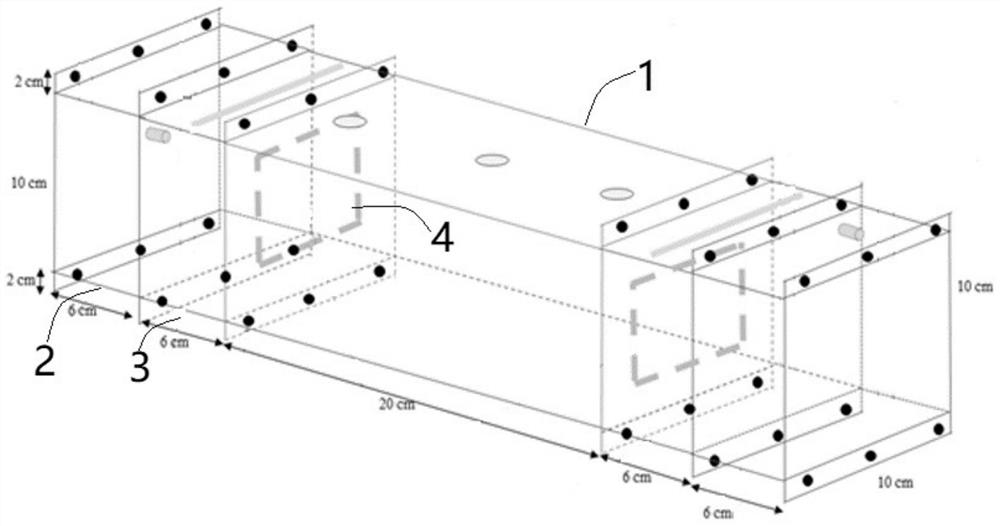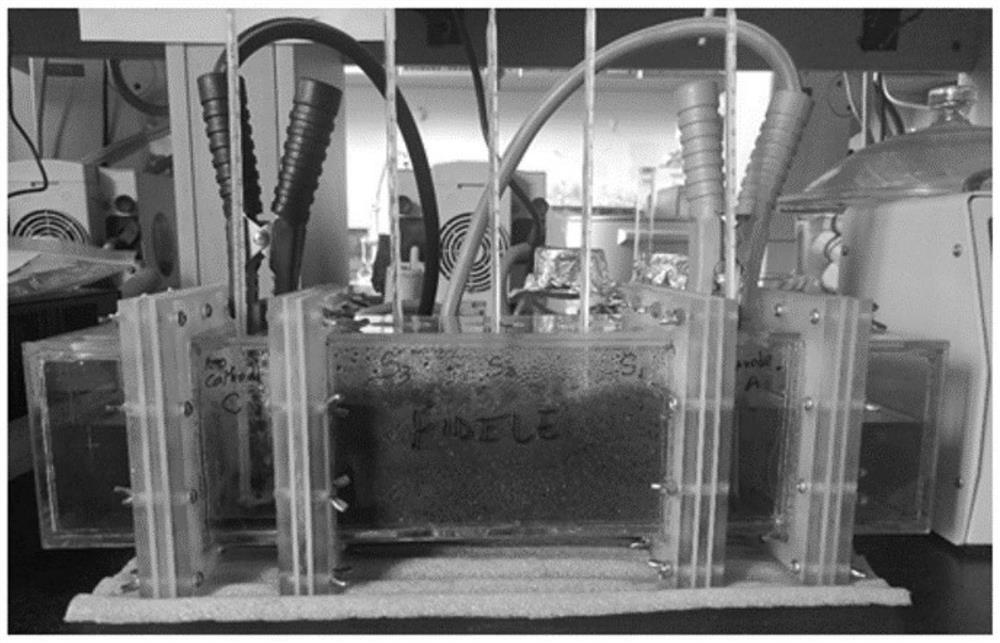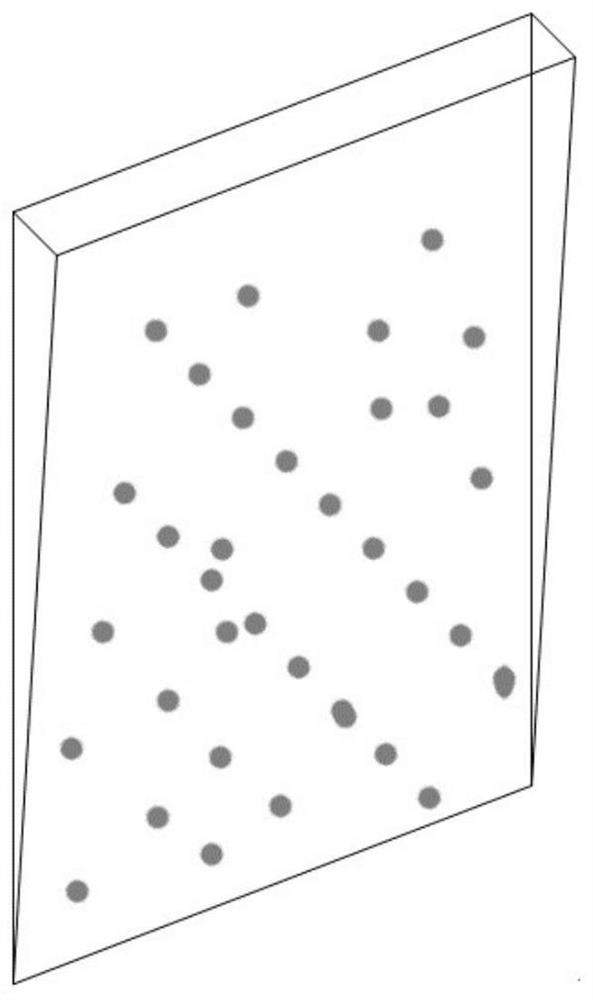A method of surfactant-enhanced advanced oxidation and electrokinetic remediation for the removal of organochlorine compounds in soil
A technology of electrodynamic repair and advanced oxidation, applied in the restoration of polluted soil, etc., can solve the problem of low removal efficiency of organic chlorine pollutants, achieve the effect of improving the efficiency of advanced oxidation reaction, promoting transmission and diffusion, and improving solubility
- Summary
- Abstract
- Description
- Claims
- Application Information
AI Technical Summary
Problems solved by technology
Method used
Image
Examples
Embodiment 1
[0037] The surfactant-enhanced electrokinetic repair method of eluting organic chlorine compounds in the soil of this embodiment specifically includes the following steps:
[0038] Step 1), the organochlorine compound-contaminated soil sample was collected from a polluted site downstream of the sewage treatment system of a pesticide factory in China. The soil sample was collected from the surface soil, ground through a 2mm sieve, and stored at 4°C for later use. Another part of the soil was taken for soil physical and chemical testing. Properties and mineral composition, the physical and chemical properties of the soil are shown in Table 1. The inorganic elements (As, Cd, Co, Cr, Cu, Mn, Ni, Pb, Zn) in the soil were analyzed by soil acid digestion, and the trace elements and other elements were quantitatively determined by Agilent 7700x and PE Optima8000. To measure the original conductivity of the soil, add 10g of dry soil sample into 50mL of distilled water, shake well for 3...
Embodiment 2
[0049] The method of surfactant-enhanced advanced oxidation and electric restoration to remove organic chlorine compounds in soil in this embodiment is basically the same as in embodiment 1, except that:
[0050] Step 3) 5 groups were set up in the experiment, group 1, group 2 and group 3 were contrast groups without nanometer zero-valent iron, the setting of group 1 was: adding TW80 with a volume concentration of 10% in the soil, group 2 The setting is: add Na with a mass concentration of 20% in the soil 2 S 2 o 8 , the setting of group 3 is: adding TW80 with a volume concentration of 10% and Na with a mass concentration of 20% in the soil 2 S 2 o 8 . Groups 4 to 6 are the experimental groups with nanometer zero-valent iron, and the setting of group 4 is: TW80 with a mass concentration of 10% and Na with a mass concentration of 20% are added to the soil at the same time. 2 S 2 o 8 . The setting of group 5 is: adding TW80 with a mass concentration of 10% in the soil, ...
Embodiment 3
[0069] This example analyzes the elution effect of surfactant TW80 on organic chlorine compounds in soil under different setting conditions, and the devices and operating steps used are basically the same as those in Example 1.
[0070] Step 1), get 20g of spare polluted soil in volumetric flask, add 0%, 5%, 10% and 20% TW80 solution respectively, use sulfuric acid and / or sodium hydroxide to adjust pH value to about 5 (maintain metal ion in soil Dissolution in the soil, keep the in-situ activation of the oxidant), and shake horizontally for 48 hours to elute the organochlorine compounds in the soil.
[0071] Step 2), weigh 2g of soil after elution, add appropriate amount of diatomaceous earth, mix well and pour into 15mL ASE extraction pool, use hexane / acetone (5:1, v / v) for extraction, ASE extraction conditions: extraction temperature 100°C, pressure 1500psi, preheating for 5min, static extraction for 5min, cycle once, nitrogen purge for 40s to collect all extracts. The extr...
PUM
 Login to View More
Login to View More Abstract
Description
Claims
Application Information
 Login to View More
Login to View More - R&D
- Intellectual Property
- Life Sciences
- Materials
- Tech Scout
- Unparalleled Data Quality
- Higher Quality Content
- 60% Fewer Hallucinations
Browse by: Latest US Patents, China's latest patents, Technical Efficacy Thesaurus, Application Domain, Technology Topic, Popular Technical Reports.
© 2025 PatSnap. All rights reserved.Legal|Privacy policy|Modern Slavery Act Transparency Statement|Sitemap|About US| Contact US: help@patsnap.com



